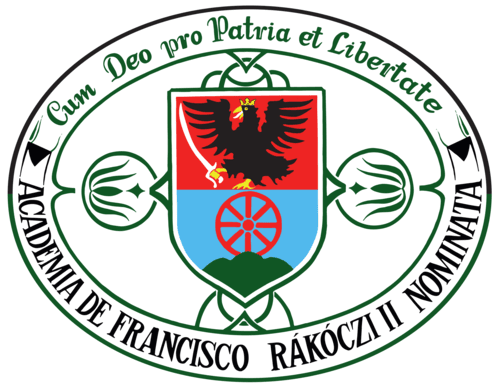The Renaissance centre of the Perényi family in the castle of Nyaláb
DOI:
https://doi.org/10.58423/2786-6726/2024-2-178-196Keywords:
Perényi family, castle of Nyaláb, Korolevo, Renaissance style, Katalin P. Frangepán, patronage, Benedek Komjáthy, Bible translation, Hungarian literature, stoneworkAbstract
The Ugocsa estates of the Perényi family, Korolevo and the castle of Nyaláb, became Renaissance monuments of national importance in the 16th century. The era was defined by ominous events: the Dózsa Rebellion, the invasion of Ottoman Turks, and the country’s division into three parts. As a result of political events, manorial centres on the periphery of the Kingdom of Hungary paradoxically sometimes had more opportunities for development than the central areas of the country. The battles raged, but the wealthy Perényi family, which gained national influence and played a decisive role in the north-eastern counties, donated to literature and art because they wanted to develop the Hungarian language. It was important for them to be the first ones to read the letters of Saint Paul in print in their native language; they encouraged and sponsored the publication of Benedek Komjáthy’s Bible translation; and they supported the intellectual activity of the first Reformers. In addition, the traveling singer Péter Ilosvai Selymes also started and finished his career with them, and even Bálint Balassi was connected to the Perényi family. Support for the publication of psalms, religious songs, secular poems, and stories is connected to the family. In addition to the men of outstanding individuality and charity (Gábor Perényi, János P., István P., etc.), there was the caring mother, a woman who also dealt with economic matters in her widowhood: Katalin P. Frangepán. In addition to supporting literature, the activities of this noble family in supporting the fine arts cannot be neglected either. Stone carvings and stove tiles with the Perényi coat of arms or Renaissance flower motifs made in the castle of Nyaláb can be compared to the works of art in Sárospatak and elsewhere. Thanks to the activities of the Perényi family who donated to art and science and tolerated the culture of other ethnicities in addition to the Hungarian, such unique spiritual treasures as, for example, the Gospel of Korolevo – one of the oldest written records of Transcarpathia and Ukraine, were able to survive to this day. It can be said that Korolevo and the castle of Nyaláb became one of the cradles of Hungarian literature born at the beginning of the 16th century during the time of the Perényi family.
References
Ács, Pál 1983. A magyar irodalmi nyelv két elmélete: Az erazmista és a Balassi-követő [Two theories of the Hungarian literary language: The Erasmusist and the Balassi-follower]. Magyar Tudományos Akadémia, Reneszánsz-füzetek 53. (Különlenyomat). (In Hungarian)
Ács, Pál 2011. Paracletus: A Mester és tanítványa: Erasmus és Komjáti Benedek [Paracletus: The Master and his disciple: Erasmus and Benedek Komjáti]. Acta historiae litterarum hungaricarum 30: 5–17. o. (In Hungarian)
Ács, Pál 2019. Keresztény humanizmus vagy előreformáció? A magyar erazmista bibliafordítók [Christian Humanism or Pre-Reformation? Hungarian Erasmusist Bible translators]. In: Kiss Erika – Zászkaliczky Márton – Zászkaliczky Zsuzsanna – Székely Júlia eds. Ige-idők: a reformáció 500 éve I. kötet. Tanulmányok. Budapest: Magyar Nemzeti Múzeum. 156–164. o. (In Hungarian)
Bartók, István ed. 2006. Ioannes Sylvester: Grammatica Hungarolatina [János Sylvester: Grammatica Hungarolatina]. Budapest: Akadémiai Kiadó – Argumentum Kiadó. (In Latin)
Bitskey, István 1998. Szellemi élet a kora újkorban [Spiritual life in the early modern age]. In: Kósa László ed. Magyar művelődéstörténet. Budapest: Osiris Kiadó. 204–257. o. (In Hungarian)
Borsa, Gedeon – Hervay, Ferenc – Holl, Béla – Käfer, István – Kelecsényi, Ákos 1971. Régi magyarországi nyomtatványok (RMNy) 1473–1600 [Old Hungarian Prints (RMNy) 1473–1600]. Budapest: Akadémiai Kiadó. (In Hungarian)
Csatáry, György 1993. Levéltári kalászatok (tanulmányok, szövegközlemények) [Archival findings (studies, text notices)]. Ungvár–Budapest: Intermix Kiadó. (In Hungarian)
Dobos, András 2020. A történeti Munkácsi Egyházmegye liturgikus hagyománya [The liturgical tradition of the historic Diocese of Mukachevo]. In: Terdik Szilveszter ed. Orcád világossága. Görögkatolikusok Magyarországon. Debrecen: Magyarországi Sajátjogú Metropolitai Egyház. (In Hungarian)
Eckhardt, Sándor 1943. Az ismeretlen Balassi Bálint. A Magyar Szemle klasszikusai [The unknown Bálint Balassi. Classics of Magyar Szemle]. Budapest: Magyar Szemle Társaság. (In Hungarian)
Eckhardt, Sándor ed. 1955. Balassi Bálint összes művei II. [All the works of Bálint Balassi Vol. II]. Budapest: Akadémia Kiadó. (In Hungarian)
Farkas, Gyula 1914. A Döbrentei Codex és Komjáthy Benedek [The Döbrentei Codex and Benedek Komjáthy]. Magyar Nyelv 10: 225–227. o. (In Hungarian)
Gerézdi, Rabán 1948. Irodalmi nyelvünk kialakulásáról (Irodalmi műveltségünk történetéhez) [On the development of our literary language (Addition to the history of our literary knowledge)]. Budapest: Egyetemi Nyomda. 52–68. o. (In Hungarian)
Gerézdi, Rabán 1968. Az erazmista Komjáti Benedek – Janus Pannoniustól Balassi Bálintig. Tanulmányok [The Erasmusist Benedek Komjáti – From Janus Pannonius to Bálint Balassi. Studies]. Budapest: Akadémiai Kiadó. 331–346. o. (In Hungarian)
Horváth, János 1957. A reformáció jegyében [In the spirit of Reformation]. Budapest: Gondolat Kiadó. (In Hungarian)
Huszti, József 1931. Janus Pannonius. Pécs: Janus Pannonius Társaság. (In Hungarian)
Kárpátaljai Megyei Állami Levéltár. 60. fond. A Perényi család iratai [Transcarpathian Regional State Archives. Fund 60. Documents of the Perényi family]. Electronic directory: F. 60. Pereni (A báró Perényi család; rodina barona Perényi [The Baron Perényi family]), od. zb. 4180, 1400–1944. Opysy. Lat., nim., fran., anhl., uhor. movy. (In Hungarian)
Keszeg, Vilmos 2008. Alfabetizáció, írásszokások, populáris írásbeliség. Egyetemi jegyzet [Alphabetization, writing habits, popular literacy. University note]. Kolozsvár: BBTE Magyar Néprajz és Antropológia Tanszék. (In Hungarian)
Komjáthy, Benedek 2013. Epistolae Pauli lingua Hungarica donatae / Az zenth Paal leveley magyar nyelven [The letters of Saint Paul in Hungarian]. Mezey András ed., Pelczéder Katalin – Kocán Béla, Latin foreword translation. Lázár István Dávid. Hasonmás kiadás. Budapest: Idea Fontana Kft. – Magyarok Nagyasszonya Ferences Rendtartomány. (In Hungarian)
Kristó, Gyula 1994. Anjou-kori oklevéltár. III. 1311–1314 [Collection of charters from the Anjou-era. Volume III. 1311–1314]. Budapest–Szeged. https://library.hungaricana.hu/hu/view/KozMagyOkmanytarak_anjou_uj_03/?pg=187&layout=s (Accessed: 23. 09. 2024). (In Hungarian)
Mezey, László 1975. Janus Pannonius XVI. századi utóéletéről [On the 16th century afterlife of Janus Pannonius]. Budapest: Akadémiai Kiadó. (In Hungarian)
Nagy, Iván 1862. Magyarország családai czimerekkel és nemzékrendi táblákkal. Kilencedik kötet. Perényi család [Families of Hungary with coats of arms and genealogical plates. Ninth volume. Perényi family]. Pest: Kiadja Ráth Mór. (In Hungarian)
Nemeskürty, István 1980. Szórakoztató olvasmány és közönsége a XVI. századi Magyarországon. Szegedi kísérlet a XVI. századi magyar vers gépi feldolgozására [An entertaining read and its audience in 16th-century Hungary. An experiment on machine processing of 16th-century Hungarian poetry in Szeged]. Irodalomtörténeti Közlemények 84/5–6: 630–639. o. https://real-j.mtak.hu/12948/1/00319.pdf (Accessed: 27. 09. 2024). (In Hungarian)
Pálffy, Géza 2007. Magyarország két világbirodalom határán [Hungary on the border of two world empires]. In: Romsics Ignác ed. Magyarország története. Budapest: Akadémiai Kiadó. 307–487. o. (In Hungarian)
Pelczéder, Katalin 2015. Komjáthy Benedek Szent Pál leveleinek fordítása a kéziratos és a nyomtatott irodalom határán [Benedek Komjáthy’s translation of the letters of St. Paul on the border between manuscripts and printed literature]. In: Géczi János – András Ferenc ed. Térátlépések. Veszprém: Pannon Egyetem Modern Filológiai és Társadalomtudományi Kar. 291–301. o. (In Hungarian)
Péter, Katalin 1985. A reformáció és a művelődés a 16. században [Reformation and culture in the 16th century]. In: Pach Zsigmond Pál ed. Magyarország története tíz kötetben. 1526–1686. Budapest: Akadémiai Kiadó. 475–604. o. (In Hungarian)
Prohnenko, Ihor – Zsilenko, Mária – Buzás, Gergely 2016. A nyalábvári Perényi-sírkő [The Perényi tombstone in Nyalábvár]. Archeogia – Altum Castrum Online. https://real.mtak.hu/134215/1/nyalabvar.pdf (Accessed: 23. 09. 2024). (In Hungarian)
Székely, Tibor 2008. A magyar bibliafordítások történelméből 1500–1955. Irodalomtörténeti tanulmány [From the history of Hungarian Bible translations 1500–1955. Literary history study]. Budapest. Electronic version: https://mek.oszk.hu/06300/06352/06352.pdf (Accessed: 10. 08. 2024). (In Hungarian)
Szentmártoni Szabó, Géza 2004. Balassi búcsúverse és a prosopopeia a XVII–XVIII. század magyar nyelvű költészetében [Balassi’s farewell poem and the prosopopeia in Hungarian language poetry of the 17th and 18th centuries.]. Irodalomtörténet 85/2: 173–211. (In Hungarian)
Szentmártoni Szabó, Géza 2023. Bécsi virágok Balassinál és Móricznál [Viennese flowers at Balassi and Móricz]. Szabolcs-Szatmár-Beregi Szemle 58/1: 38–57. (In Hungarian)
Szerb, Antal 1978. Magyar irodalomtörténet [Hungarian literary history]. Budapest: Magvető Könyvkiadó. (In Hungarian)
Szilády, Áron 1883. Komjáthy Benedek: Epistolae Pauli lingva hungarica donatae. Az Szent Pál levelei magyar nyelven. Krakkó, 1533. Fakszimile kiadás, kísérő tanulmány [Benedek Komjáthy: Epistolae Pauli lingva hungarica donatae. The letters of Saint Paul in Hungarian. Krakow, 1533. Facsimile edition, accompanying study]. Budapest: Magyar Tudományos Akadémia. (In Hungarian)
Szilády, Áron 1883. Régi Magyar Költők Tára IV. XVI. századbeli magyar költők művei. III. kötet. 1540–1575 [Library of Old Hungarian Poets IV. Works of 16th century Hungarian poets. Volume III. 1540–1575]. https://mek.oszk.hu/04700/ 04758/html/rmkt4/rmkt04_162.html (Accessed: 23. 08. 2024). (In Hungarian)
Tóth, Zsombor 2006. A történelem terhe [The burden of history]. Kolozsvár: Komp-Press. (In Hungarian)
Tringli, István 2008. A Perényi család levéltára. 1222–1526 [The archive of the Perényi family. 1222–1526]. Budapest: MTA Történettudományi Intézet. (In Hungarian)
Varjas, Béla 1964. Erazmista bibliafordítás és nyelvművelés, a magyar irodalom története 1600-ig [Erasmusist Bible translation and language cultivation, the history of Hungarian literature up to 1600]. In: Klaniczay Tibor ed. A magyar irodalom története I. kötet. Budapest: Akadémiai Kiadó. 294–303. o. (In Hungarian)
Varjas, Béla 1969. A magyar könyvkiadás kezdetei és a krakkói magyar nyelvű kiadványok [The beginnings of Hungarian book publishing and Hungarian-language publications in Krakow]. In: Csapláros István – Hopp Lajos – Jan Reychman – Sziklay László eds. Tanulmányok a lengyel–magyar irodalmi kapcsolatok köréből. Budapest: Akadémiai Kiadó. 79–129. o. (In Hungarian)












